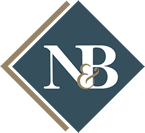19 Feb COVID-19 Legislation Update – Part 2 of a Multi-Part Legislative Update PPP 2.0 Loans
This second installment of our multi-part overview will discuss the new PPP loans available for 2021 both for first-time applicants and for those who received 2020 PPP loans. As always, please keep in mind that the details of any of the programs discussed require close analysis with your accountants, bankers, or legal counsel to insure the programs are right for you and your business.
New Payroll Protect Program “Second Draw” Loans
In late December of 2020, Congress passed the Consolidated Appropriations Act of 2021 (CAA) which expands on the success of the CARES’ Act’s Payroll Protection Program (PPP) by offering a second round of PPP forgivable loans. While very similar in most key respects, these “Second Draw PPP Loans,” or “PPP 2.0,” have some notable differences from the first round of PPP loans (“PPP 1.0”). Of note:
- PPP 2.0 has a different set of eligibility requirements than PPP 1.0. Under PPP 2.0, businesses are eligible if they have less than 300 employees (or fewer than 500 if there is more than one physical location) and if the business can demonstrate a reduction in gross receipts of 25% or more for any quarter of 2020 as compared to the same quarter of 2019.
- For service industry food and accommodation businesses (those categorized with an NAICS code starting with 72), such borrowers can receive 3.5 times the business’s average 2019 monthly payroll, rather than the typical 2.5 times allowable to PPP applicants.
- For all PPP applicants, the cost of group health care benefits (an element of PPP “Payroll Costs”) includes group life, disability, vision and dental insurance benefits, a clarification which applies to any PPP loan, thus expanding the Payroll Cost pool subject to forgiveness.
- PPP 2.0 has limited all applicants to a maximum PPP loan of $2,000,000.
- Publicly traded companies are no longer eligible for PPP loans.
- 501(c)(6) non-profits are eligible to apply for PPP 2.0 loans.
- Below is a list of types of old and new business expenses that PPP proceeds could be used to pay for and that would, depending on the ratio of how the PPP proceeds were used, make the PPP loans forgivable. Under PPP 1.0, borrowers were only permitted to use PPP loans on expense-categories numbered “i” through “vii” below. Moreover, at least 60% of the PPP had to be used on categories “i” through “iv” in order to achieve full forgiveness. However, under PPP 2.0, PPP loan proceeds may now be used on the expanded list of permissible expenses below (“i” through “xi”). Moreover, achieving full forgiveness of the PPP 2.0 loan is easier because expenses in categories “viii” through “xi” will count towards the 60% threshold necessary to achieve 100% forgiveness.
i. “Payroll costs”, as defined under the CARES Act (“PPP Payroll Costs”);
ii. Mortgage interest;
iii. Rent;
iv. Utilities;
v. Costs related to group paid sick, medical or family leave and insurance premiums;
vi. Interest service for debt;
vii. Employee compensation in excess of what constitutes PPP Payroll Costs;
viii. Covered operations expenditures: Costs of software or cloud services that facilitate business operations, of product or service delivery, of processing, payment or tracking of payroll expenses, of human resources, sales and billing functions, or of accounting or tracking of supplies, inventory, records and expenses;
ix. Covered property damage costs: To the extent not covered by insurance, costs related to property damage and vandalism or looting due to public disturbances occurring during 2020;
x. Covered supplier costs: Costs of supplies that are essential to the borrower’s operations, to the extent contracted before or, in the case of perishable goods only, during, the applicable covered period (or forgiveness spending window as we refer to such period) for the PPP loan; and
xi. Covered worker protection expenditures: Costs of implementation of worker protection requirements or guidance established by HHS, the CDS or OSHA (or equivalent state- and local-level agencies) on or after March 1, 2020.
One of the most pleasant surprises of PPP 2.0 from a borrower’s perspective, is that the application process should hopefully be very simple. Basically, the documents required to prove an applicant’s payroll costs are generally the same as PPP 1.0. However, borrowers who used calendar year 2019 payroll costs to determine both your first and/or second PPP loan amounts, so long as the borrower applies through the same lender, will not be required to provide additional documentation to justify payroll costs.
For loan amounts over $150,000, borrowers must provide documentation demonstrating the 25% gross receipts reduction. This documentation can include tax forms, quarterly financial statements, or bank statements. If the loan amount applied for is $150,000 or less, borrowers are not required to submit documentation on the 25% gross receipts reduction with the second draw loan application but may be required to do so when applying for loan forgiveness.
As readers can hopefully see, there are exciting and potentially business-saving opportunities for many needy businesses built into this program. Prompt attention to these matters with lenders, accountants and attorneys could be crucial to the success or failure of a business.
The next installment will discussion changes to the Economic Injury Development Loan (EIDL) program, Wisconsin-specific tax issues, and more.
The guidance provided above is general in nature and readers are encouraged to reach out to Neider & Boucher, S.C., or to their own legal counsel to determine the applicability of these issues to their own personal and/or business needs.

